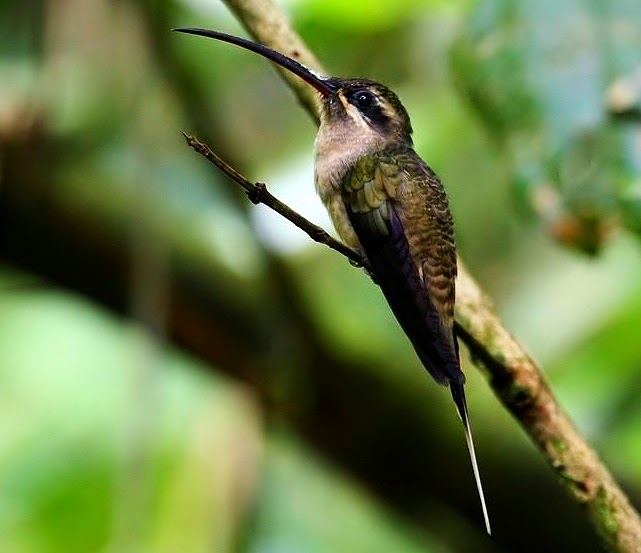 |
| Photo by Maxime Dechelle (GEPOG) |
Common name:
great-billed hermit (en); besourão-de-bico-grande (pt); ermite à long bec (fr); ermitaño piquigrande (es); langschnabeleremit (de)
Taxonomy:
Order Apodiformes
Family Trochilidae
Range:
This species occurs in three disjunct populations. One is found in Suriname, French Guyana and marginally into Amapá in northern Brazil. A second one is found from from southern Colombia and Venezuela down to central Bolivia and north-western Brazil. The third population is found along the coast of south-eastern Brazil, from Bahia to Espírito Santo.
Size:
These birds are 13-17 cm long and weigh around 6 g.
Habitat:
The great-billed hermit is mostly found in tropical rainforests, but also use swamp forests, moist scrublands and high-altitude scrublands. they are present from sea level up to an altitude of 2.400 m.
Diet:
They feed mainly on the nectar of various small, brightly coloured and scented flowers, but also take small insects and spiders.
Breeding:
Great-billed hermits are polygynous, with the males forming a lek where they display to attract females, having no futher part in the breeding process after mating. The female builds the nest alone, a cone woven from plant fibres with moss for camouflage. Spider webs are used to suspend it from a branch or the underside of a broad leaf, or less frequently under a bridge or from the rood of a building. The female lays 1-3 white eggs, which she incubates alone for 14-16 days. The chicks are raised by the mother and fledge 21-24 days after hatching. Each female raises a singe brood per season.
Conservation:
IUCN status – LC (Least Concern)
This species has a very large breeding range and is described as fairly common. It is suspected to lose 7,5-8% of suitable habitat within its distribution over the next decade based on a model of Amazonian deforestation, therefore being suspected to suffer a small decline in the near future.







